World Cup Finals Part 1: The Prudential Cup Era
read story
Come here to find all the information you need to help you plan your visit to the Home of Cricket, the latest news from the Ground and to book your event.
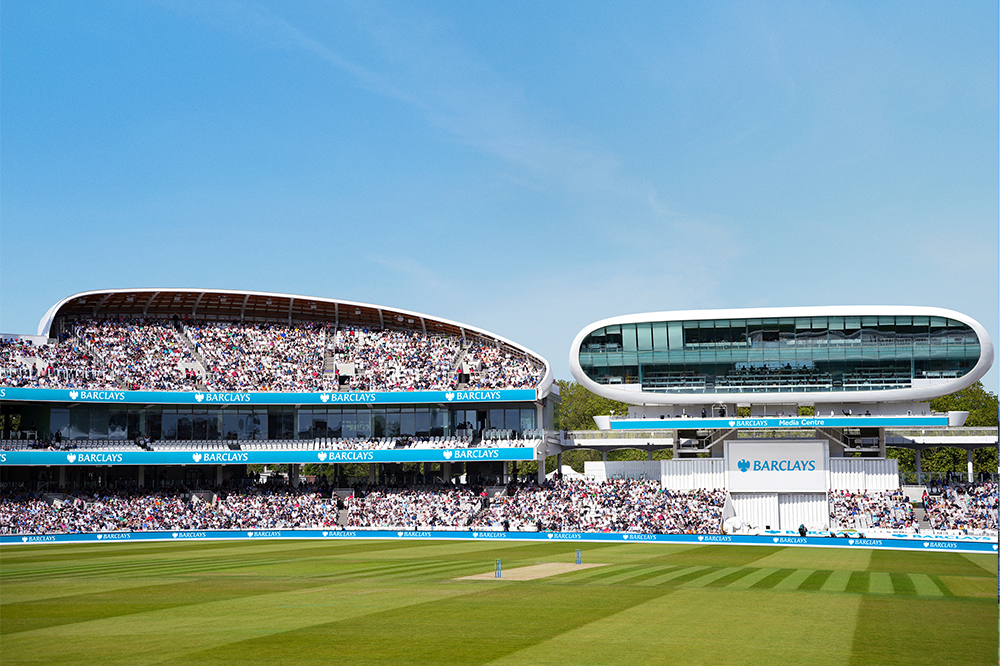
We’ve got a wide variety of formats covered with an exciting line up of matches to get your cricket fix.
Whether you like red or white ball, domestic or international, or men’s or women’s cricket, Lord’s will have the perfect cricket experience for you, your family and friends.
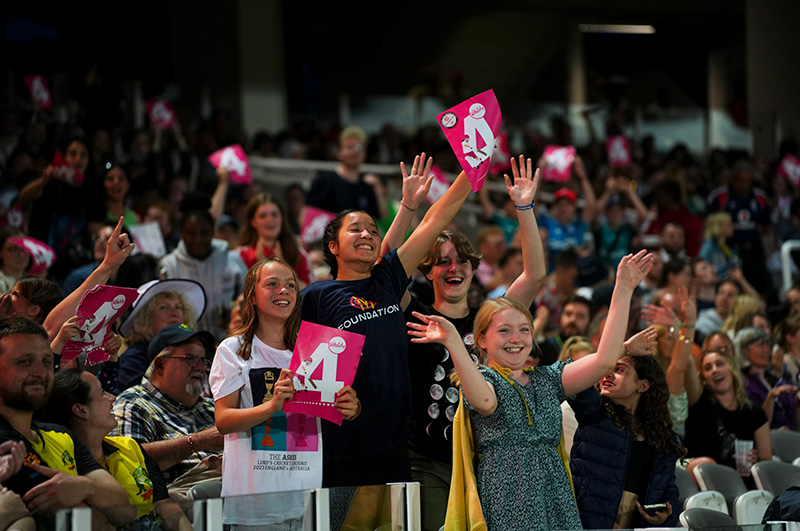
Marylebone Cricket Club is the world’s most active cricket club, the owner of Lord’s Ground and the guardian of the Laws of the game. Find out more about the history of MCC, our work in the Community and the famous Lord's Museum.
FIND OUT MORE

Step closer. Your new digital platform at the Home of Cricket.
Subscribe now for early access to selected international matches, exclusive content, coaching masterclasses and many more discounts and offers.
Your access to Lord's like never before.
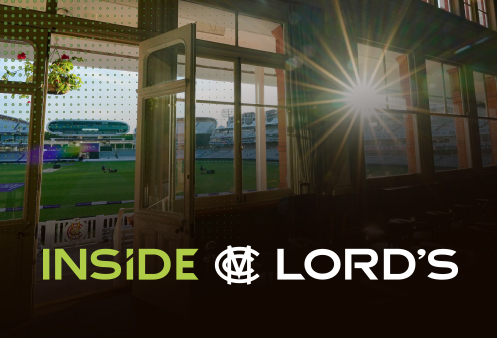
Marylebone Cricket Club is one of the World's most active Cricket Clubs, the owner of Lord's Ground and the Guardian of the Laws and Spirit of the Game.
With around 200 full time staff members covering a wide range of sectors - from IT to Chefs to Pavilion Stewards - there is a role at the Home of Cricket for everyone.

Posted: 28 June 2019
With the 2019 Cricket World Cup final at Lord's fast approaching, MCC Archivist Rob Curphey looks back at previous World Cups finals.
The format changed again to include two group stages – the second known as the ‘Super Six’ which produced four semi-finalists.
Like the current 2019 tournament the semi-finals would take place in Birmingham and Manchester, with the showpiece finale once again in London at Lord's.
The superb form of fast bowler Shoaib Akhtar catapulted Pakistan into the final, defeating New Zealand by 9 wickets in the semi-final at Old Trafford.
The other semi-final at Edgbaston witnessed one of the greatest games of all time between Australia and South Africa, as the Proteas, needing one run to win from three balls, suffered a run out when Lance Klusener decided to go for a single while his partner, Allan Donald, shocked at Klusener’s decision, dropped his bat and was left stranded down the pitch as he was run out by a combination of Mark Waugh, Damien Fleming and Adam Gilchrist.
The match ended in a tie meaning Australia went through as they had a better record in the ‘Super Six’ stage.
After the drama of the semi-final, the final at Lord’s was very much a one-sided affair. Pakistan’s captain Wasim Akram won the toss and decided to bat, but they succumbed to a total of 132 all out in 39 overs.
Shane Warne took 4-33, including the wicket of Pakistan’s top scorer Ijaz Ahmed (22) who Warne dismissed with a sparkling leg-break that pitched outside the line of Ahmed’s pads and hit the top of his off stump. Australia came out after the innings break needing 133 to claim their second World Cup title.
Adam Gilchrist, opening the batting with Mark Waugh, got to 50 in 33 balls before being dismissed for 54. By then the Australians were halfway towards their objective. In the end, Australia achieved their target in the 21st over, losing one more wicket, that of Ricky Ponting, as they won by 8 wickets.
Steve Waugh, the only survivor of Australia’s victorious 1987 team, lifted the trophy on the middle balcony at Lord’s, following in the footsteps of Kapil Dev and Clive Lloyd.
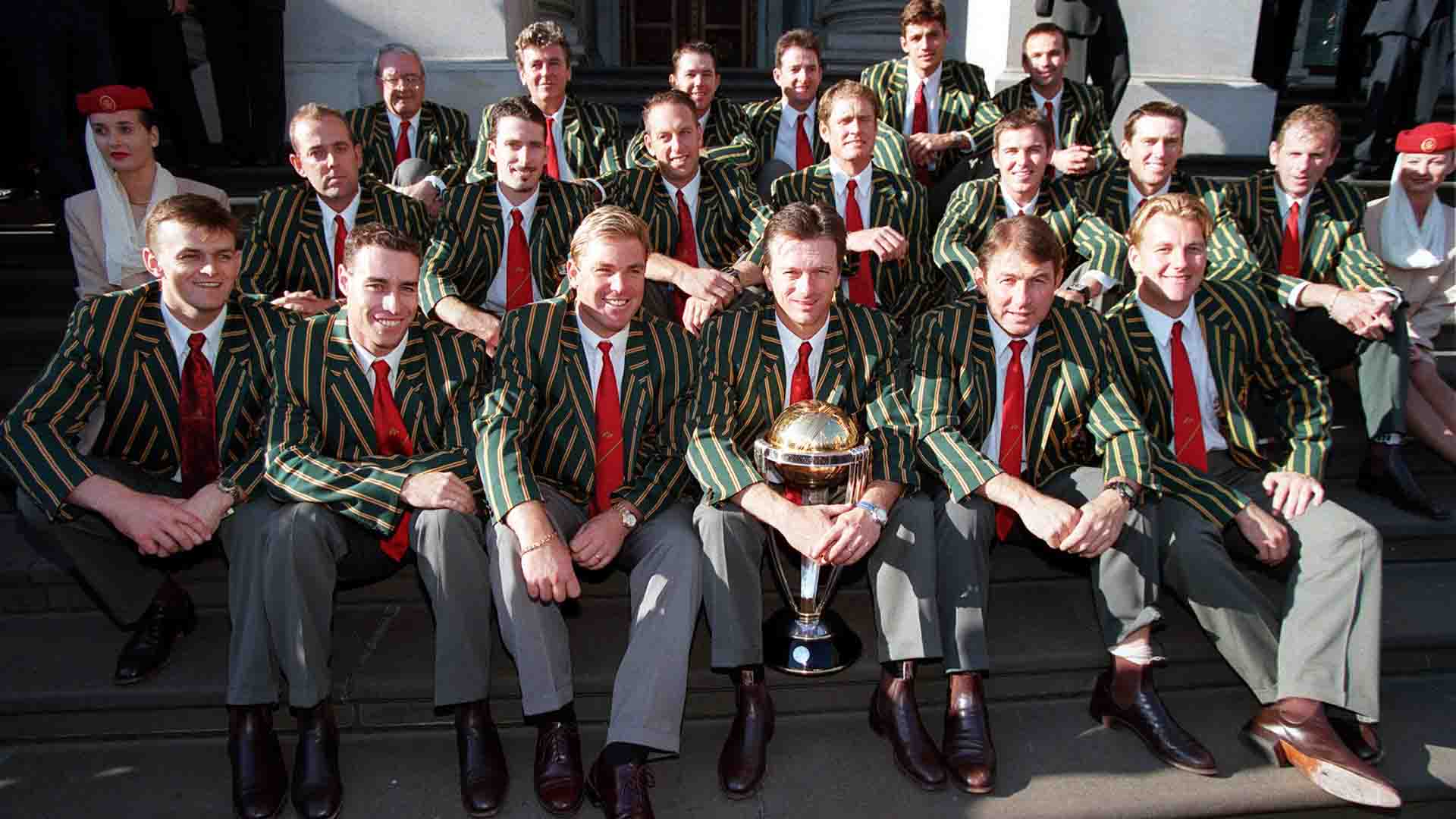
The format remained the same as in the previous tournament, though this time the Super Six stage was not needed to determine the finalists. Australia made it to their third consecutive final defeating Sri Lanka by 48 runs, while India made it to their first final for 20 years, defeating surprise semi-finalists Kenya by 91 runs in Durban.
The final, held at the New Wanderers Stadium in Johannesburg on 20th March 2003, saw India win the toss and decide to field.
For the second consecutive World Cup Final, Adam Gilchrist, opening the batting with Matthew Hayden, made a half century before being caught off the bowling of Harbhajan Singh for 57. When Hayden was also caught off the bowling of Harbhajan Singh for 37, Damien Martyn joined Ricky Ponting at the crease with Australia 125 for 2 after 19.5 overs.
The two went on to take the game away from India, with an unbeaten partnership of 244 – Ponting scoring 140 and Martyn 88. In the last five overs they scored 74 runs, setting India a target of 360 to win their second World Cup title.
In reply, India suffered the worst possible start when Player of the Tournament Sachin Tendulkar hooked a shot which was caught and bowled by Glenn McGrath inside the first over.
His opening partner, Virander Sehwag, scored 82 before being run out by Darren Lehmann, and after Rahul Dravid was bowled by Andy Bichel, India were 187-5 in the 32nd over.
Eight overs later, Australia managed to wrap up their victory when Zaheer Khan was caught by Lehmann off the bowling of McGrath, meaning that India were bowled out for 234 in precisely 3 hours, and Australia won by 125 runs, another dominating performance in the final.
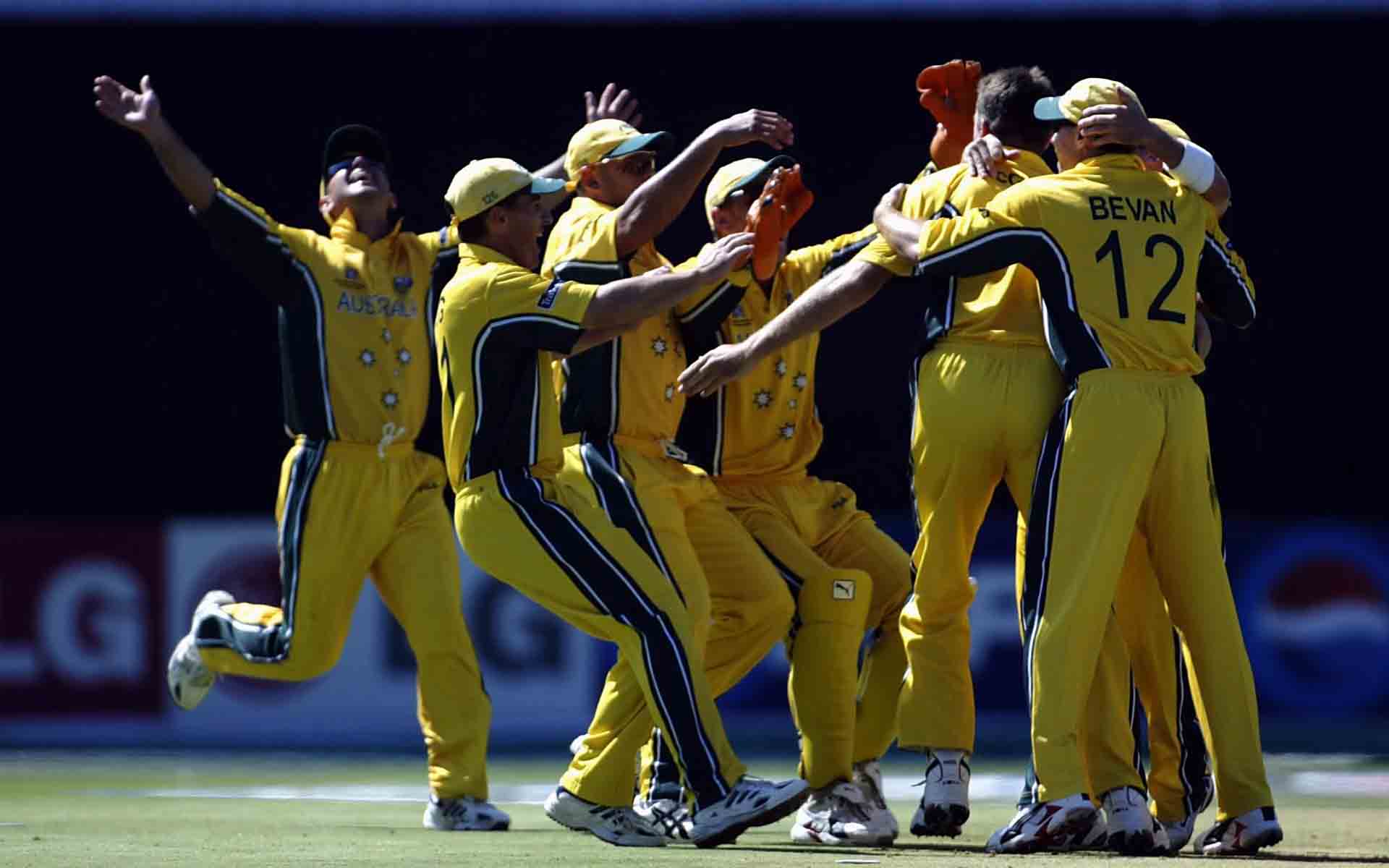
Ricky Ponting, one of five from the XI who defeated Pakistan at Lord’s four years previously, received the trophy from ICC President and fellow Australian Malcolm Gray.
The ‘Super Eight’ group stage was won by the Australian team with Sri Lanka finishing second, and both won their respective semi-finals; Sri Lanka overcame New Zealand at Kingston while Australia won a one-sided semi-final against South Africa in St Lucia.
The final, held at the Bridgetown Oval in Barbados, was decimated by rain, which delayed the start of the match by two and three-quarter hours. When play started the match was reduced to 38 overs per side.
Australia won the toss and decided to bat, and Adam Gilchrist played one of the great one-day innings, scoring 149 from 104 balls. Holding a squash ball inside his glove – an unusual yet not illegal tactic - Gilchrist scored eight sixes, which at the time equalled the record for any World Cup innings.
Gilchrist’s score remains the highest in a final, and contributions from Hayden (38) and Ponting (37) propelled Australia to a total of 281 for 4. Lasith Malinga was the pick of the Sri Lankan bowlers with figures of 2 for 49, but for the second consecutive final Australia had posted an imposing total.
In reply, Sri Lanka suffered a poor start when opener Tharanga was caught by Gilchrist from the bowling of Nathan Bracken in the third over. Bracken was the only bowler in the entire match to complete a maiden.
Sanath Jayasuriya and Kumar Sangakkara both made half-centuries, but after they were both dismissed, rain returned and the players had to leave the field. When they resumed, on 149 for 3 from 24.5 overs, the new target set for Sri Lanka was 269 from 36 overs.
The target was too big for Sri Lanka to attain and they continued to fight despite losing wickets in the increasing darkness. When the Sri Lankan team were offered the light requiring 63 runs from 3 overs, they accepted it and Australia began to celebrate their fourth World Cup title and third in a row.
However, the match officials believed that the final three overs had to be bowled to constitute a result, despite the fact that the Duckworth-Lewis method enabled a result to stand after 20 overs. Thus, both sides went out to complete the last three overs and in failing light it was agreed that those overs were bowled by spinners, to alleviate safety concerns – which denied Player of the Tournament Glenn McGrath the chance to bowl the final over of his international career.
In the end Sri Lanka made a score of 215 for 8 and due to the Duckworth-Lewis method, Australia officially won the match by 53 runs, leaving captain Ponting, who alongside McGrath and Gilchrist were the three ever-presents in final victories from 1999-2007, to lift the trophy for the second successive tournament.